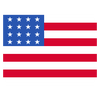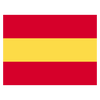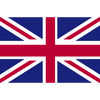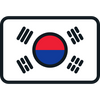Whether you want to recover quickly, deal with muscular pains, or just want to loosen up, having the right self massage tool can be key.
For example, we'll go through our list of must-haves in terms of where they work on your body, and the techniques needed. After all, it's not the shopping list of massage tools you need, it's the effect from massage therapy practice!
Always start with the spine.
The movement starts and ends with the spine. Although it may seem counterintuitive, movements like walking are initiated in the spine.
The spine is just like the foundation of your house. It's hard to build straight walls from a crooked foundation, and your body's no different.
Build your foundation of mobility and flexibility around your spine.
-
If your upper back is hunched over, your shoulder won't be able to extend fully without stressing its muscles and ligaments. The shoulder should open up with the back.
-
If your lower back is tight, it can misalign the pelvis and deactivate the glute muscles.
-
If the spine can't move, movement will come from elsewhere.
The list goes on. The ideal is a mobile and strong spine. Then, your shoulder blades can move freely, your hip muscles can relax and function properly, and everything else falls in line.
So, coming in hot with recommendation number one, a massage tool for your spine!
Let's start with these three:
Full size foam rollers

For full extension in your spine (bending backwards, or the opposite of slouching), you'll want something with some height. Full-sized foam rollers are the best tool for daily maintenance, and making sure you're getting some simple and easy movement in your spine on a daily basis. It's one of the most common self massage tools for a reason.
Smaller foam rollers for your spine
Full sized foam rollers are great for big, all-encompassing movement in the spine, but what if you want to work on a specific area?
RAD Helix: your lower back's best friend.

Tools like the RAD Helix provide the same base of support, but in a much smaller size. You can focus on more specific areas of the spine like neck, middle back, and lower back.
The difference between a massage tool like this and a ball is the base of support. It's certainly more comfortable to spread out the pressure. If you haven't bent backwards like this in a decade, then it's best to start easy.
Deep tissue massage tools like the RAD Helix are great for addressing tightness in the spine. They offer a broader base of support, making them more comfortable for deep tissue work compared to balls. Trigger point tools can target specific knots and areas of tension, providing relief where it's needed most. For instance, the RAD Helix can act as a trigger point tool, easing tension in the neck, middle back, and lower back.
Smallest Self Massage Tools for your spine.
The quotations are ours, because it's not foam, and most people wouldn't call this a foam roller. However, it's the most precise tool for your spine, because you can work on individual joints of the spine. You'll be able to feel the areas where tightness is holding back your ability to move.
You see, most people have problem areas in short segments of the spine. An example is the area between your shoulder blades, a common spot of tension for desk workers. They just don't fit here, so it's best to find a massage tool that can help tackle this problem.
RAD Roller: sometimes smaller is better.

They are essential for just this reason; sticky vertebral joints. Having two connected balls will support either side of the spine, encouraging relaxation and lengthening in those tissues. Sometimes referred to as trigger point therapy, these massage tools get into much smaller spaces, and can help to work on those trigger points.
Recovery; the right tools for the right task.
Recovery is all about helping tissue heal and repair, and while using manual massage tools, we're thinking about moving fluid through the area.
Move fluid, recover fast.
The fluid in your body is like trucks on a highway. Some carry building materials, some remove trash, and some travel across the country. If a football game lets out in the middle, chaos ensues. We need to ensure smooth traffic flow, which recovery tools help achieve by promoting fluid movement.
Massage Sticks; the right tool for recovery.
To put it simply, massage sticks are the best tool for the job.
For recovery tools, we want:
-
Light pressure
-
Broader/bigger tools to contact more tissue
-
Higher repetitions

You can relax the leg your working on, you can easily stack up a lot of light reps, and you can change pressure if need be. If you're sore, being able to start with very little pressure is important. If you want to ease in, then you can stop when you're feeling around a 50% reduction in stiffness and/or soreness.
RAD Rod Mini, a portable massage stick

Wait, what about my back?
If you already use self massage tools, you might know that massage sticks don't work so well on the back, for probably obvious reasons; it's just hard to access.
Just like using a massage stick, we want something with a big surface area to help spread out the pressure (because soreness can be uncomfortable).
RAD Helix; the best tool for recovery.
You can still use a more standard foam roller for this, and it's better to have something low to the ground so half of your body weight is taken out of the equation.
And finally, a tool for (almost) everything else.
We've gone through two types of massage tools we think you should own; a tool for working on your spine, and a tool for recovery.
Now we just need something to fill in the cracks, and what better than a massage ball?
RAD Rounds

Massage balls, essential for trigger point therapy and deep tissue work, come in a variety of shapes, sizes, and densities. They're versatile tools for both simple and complex massage tasks, indispensable for everyone's self-care routine at home.
Our Top Picks?
Let's preface this by saying that the best tool is the one you need, especially when targeting trigger points or deep tissue. If you have a specific goal or muscle to work on, choose the exact tool for that.
Best for overall recovery
Want to recover from that workout? Start here. Maybe end here too.
RAD Rod

Best for the upper back and neck
The upper back and neck bones are just much smaller than the lower back, and the rest of the spine. If you want to take care of them, you'll need smaller tools
RAD Roller

Best for the lower back
The big lower back needs bigger tools (but not too big!). The Helix was designed for this purpose. Smaller than a standard foam size but perfectly fitted for the lower back.
RAD Helix

In case you are not cannot determine your needs, we recommend consulting with massage therapists before delving into the world of pain revealing and relaxing self massage tools!




















